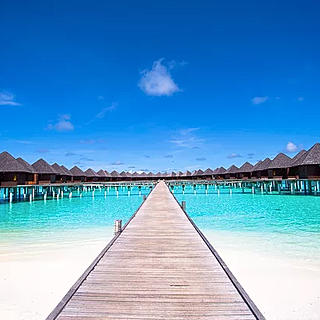Destination spotlight: Spain
- Largay Travel
- Aug 4, 2022
- 4 min read

Tomes can be written about the rivalry between Madrid and Barcelona, Spain’s primary cities. Blood has been spilled, friends turned to enemies and bitterness drawn out for decades. And that’s just on the soccer pitch. Madrid was the seat of power as a newly unified Spain built one of the most powerful empires the world has ever seen in the 16th century. Barcelona, meanwhile, grew as an industrial power and capital of Catalonia, a prosperous region with a fierce independent streak.

Fortunately, you don’t have to choose between them. In Madrid, you can see many of Europe’s greatest works of art at the Museo del Prado, stroll through the Plaza Mayor and head on a day trip to the well-preserved “city of three cultures,” Toledo. In Barcelona, you can marvel at the architecture of Antoni Gaudi, stroll the major thoroughfare of La Rambla and explore the well-preserved Gothic Quarter. If you’re heading out on a Mediterranean cruise, there’s a good chance you’re leaving from Barcelona, which is also the gateway to the Balearic islands of Mallorca, Menorca and Ibiza. Go at the right time — and get your tickets well in advance — and you can view one of the great spectacles in sport, El Clasico between soccer powers Real Madrid and FC Barcelona.

Though the two major cities are well worth a visit, they’re just the beginning of the wonders of Spain. In the Basque Country on the northern coast, an enchanting combination of beautiful beaches and Michelin-starred restaurants makes San Sebastian a must-visit. While you’re up there, check out the spectacular Guggenheim Museum in Bilbao. Inland from those gems is the Rioja wine region. Anyone who’s walked the Camino de Santiago can tell tales of the beauty of northern Spain. In the west, along the Portuguese border are the sparsely populated but historically rich Castile & Leon and the hardscrabble Extremadura, birthplace of many conquistadors.

Andalusia spans the southern coast where the Atlantic and Mediterranean meet and Africa nearly meets Europe. The historic cities of Seville, Cadiz, Cordoba and Granada are rich in culture and architecture, while Malaga, Marbella and the rest of the Costa del Sol are renowned for their beaches. Work your way up the east coast and you’ll come to Valencia, whose contributions include L'Oceanogràfic — Europe’s largest aquarium — and paella. While many regions compete for your visit, whatever taste of Spain you choose is sure to be a good one.

COVID entry protocols: Americans can travel to Spain if they have completed their vaccination schedule at least 14 days before traveling. Vaccination certificates issued in Spanish or English will be accepted, on paper. Unvaccinated children from the same family unit under 12 may enter without having to present proof of a Covid-19 test or vaccine. All passengers arriving in Spain by air or sea, including those in transit and those under 6 years of age, must complete a health control form before departure through the https://www.spth.gob.es/ website or the Spain Travel Health app. The completion of the form generates an individualized QR code that the traveler must present to the transport companies before boarding, as well as at the sanitary controls at the point of entry to Spain.
Where to stay
Mandarin Oriental Ritz, Madrid
For 110 years, Mandarin Oriental Ritz has been rolling out the red carpet for the likes of celebrities, politicians, and royalty. Following a highly anticipated and extensive restoration, the hotel will be doing so once again in extravagant style. Picture top-of-the-line spa updates including multi-sensory showers and a vitality pool, room and suite makeovers by renowned
French designers Gilles & Boissier, and a completely reimagined dining experience with Michelin-starred chef Quique Dacosta at the helm.
Hotel Arts Barcelona
A dazzling display of contemporary architecture, Hotel Arts Barcelona (operated by the Ritz-Carlton Hotel Company) is renowned the world over for its impeccable service and lavish accommodations, including 28 duplex penthouses. The penthouses are located on the top floors of the hotel and offer butler service and use of a MINI Cooper. The hotel has an exclusive spa, 43 The Spa, located on the 43rd floor. Visit the terraced gardens, infinity-edge pool, family pool, the stunning collection of Spanish art, or the five restaurants – including the acclaimed two-Michelin-starred Enoteca Paco Pérez, with a wine cellar topping 700 labels.
Hotel Alfonso XIII, Seville
Hotel Alfonso XIII reclaims its place among Europe’s grandest hotels. The 148 guest rooms and suites have custom furnishings and a fusion of Moorish, Andalusian, and Castilian styles. Original marble floors and handpainted ceramic tiles sparkle in the refurbished lobby and common areas; the popular Bar Americano has been redesigned with a hip art deco flair. Sip tea in the tranquil courtyard, stroll the lovely gardens, or relax by the swimming pool before dining at Restaurante Ena.
Son Bunyola
Richard Branson’s latest dreamscape, Son Bunyola, is worth the splurge. Three spacious, traditional Balearic villas (one has five bedrooms, the others four) lie sprawled across 680 acres on Mallorca’s northwest coast. Each has its own heated pool, sleek kitchen, and courtyard with dining area, although Son Balagueret – housing a bedroom in the original 13th-century turret – has its own magic. The lush estate includes vineyards, olive groves, and citrus orchards; you can walk to the beach, hike and bike on miles of mountain trails, or play some of the island’s almost two dozen golf courses.
.jpeg)




Comments